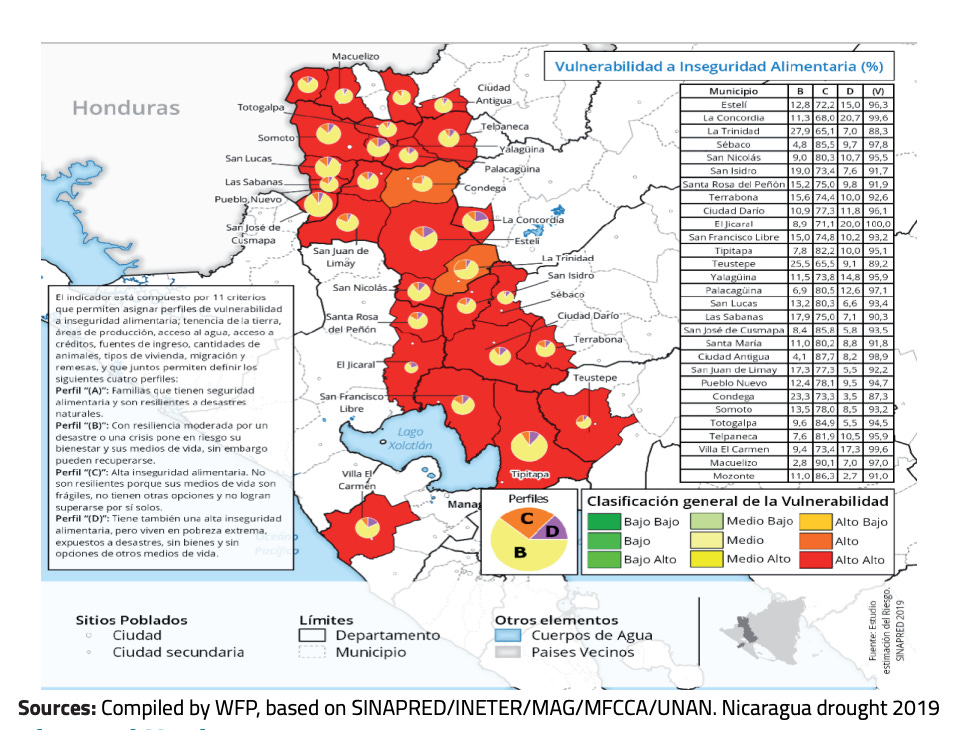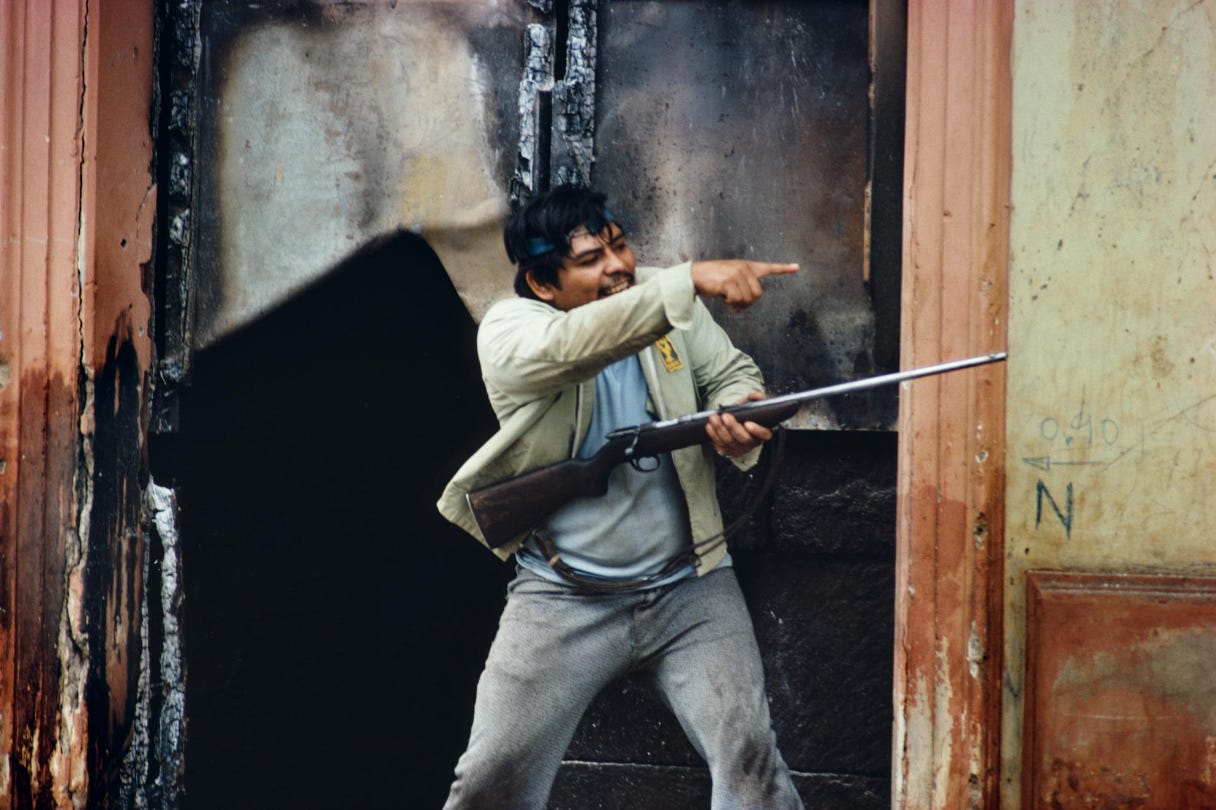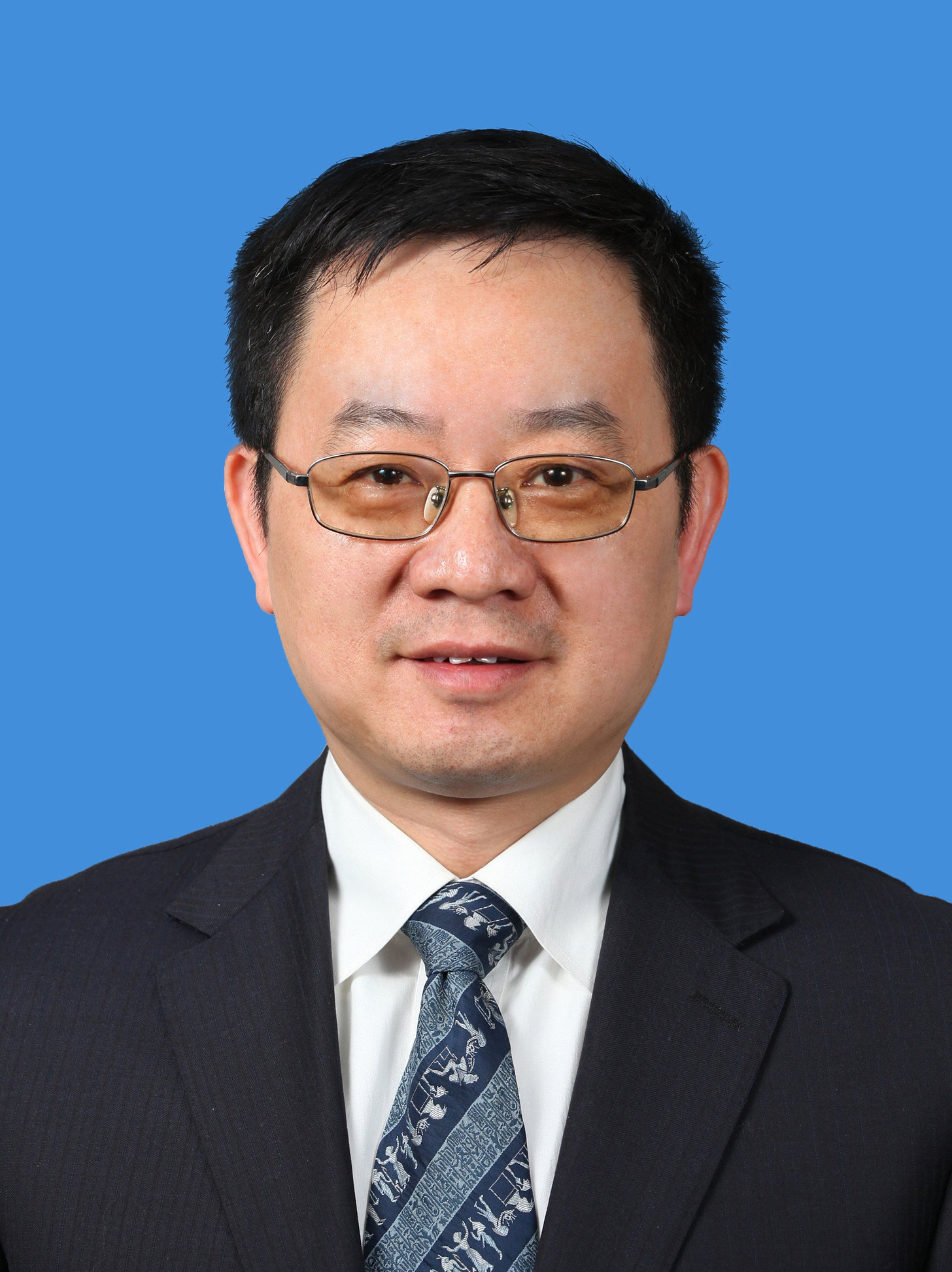Molotov man & the Nicaraguan uprising of 1979, polycrisis in Central America & rehabilitating the Qing dynasty
Great links, reading and images from Chartbook Newsletter by Adam Tooze
Susan Meiselas, Youths practice throwing contact bombs in forest surrounding Monimbo, 1978, C-print, 24 × 16".
This website devoted to Susan Meiselas’s legendary coverage of the Nicaraguan uprising, is remarkable.
***
Several times per week, paying supporters of Chartbook Newsletter, receive an email like this, jam-packed with fascinating images, links and reading. If you would like to receive the full Top Links in future, click here
On with the story.
***
Nicaragua, El Salvador, Honduras - GDP per capita (crude, I know)
The Economist pithy summary of the situation in Nicaragua
Mr Ortega lost an election in 1990 and stepped down. Since coming back to power in 2007, he has vowed not to lose it again. On returning to office he cosied up to businessmen and won over the Roman Catholic church with one of the world’s strictest abortion bans. Between 2008 and 2015 Nicaragua bought $4.5bn of Venezuelan oil at discounted prices. The proceeds from selling it were funnelled into banks owned by the ruling party and lavished on Mr Ortega’s supporters. The economy grew on average by 5% a year between 2010 and 2017. The share of people living on less than $3.20 per day fell from 27% in 2005 to 10% by 2017. With potential critics silenced or bought off, Mr Ortega took over all branches of the state. The Supreme Court (widely considered to be controlled by Mr Ortega) abolished term limits and expelled the leader of the opposition and 16 of his supporters from Congress. More recently the regime has become bloodier and more brazen. When students and pensioners peacefully protested against the government in 2018 (over cuts to social security), police and Sandinista goons killed over 350 people. Before a general election last year, in which Mr Ortega won a fourth consecutive term, all seven opposition presidential candidates were locked up.
This article by Klein et al is quite interesting about the 2018 protests, whilst applying a strange "economic” model of protest and repression.
Nicaragua’s converging crises
Source: South North Nexus
On the road to Managua, July 1979
The lumpen car battery and relativity
Weird science has a pleasing way of turning up in real life. The lumpen car battery, with its innards of lead and sulphuric acid, works thanks to the effects of relativity, which deliver five-sixths of its charge ...
Source: FT
I must admit that I was so taken aback that I looked it up and apparently it is true. It has to do with the very very very fast-moving electrons in the lead atom.
Source: APS
Nicaragua, Masaya, Jun 8 1979, Popular forces begin final offensive
Vive La Crise with Yves Montand

Qing dynasty rehabilitated in era of Xi Jinping
Beijing has appointed historian Gao Xiang, a specialist on the Qing dynasty, to head the influential Chinese Academy of Social Sciences (CASS) think tank. Gao, 59, replaces Shi Taifeng, whose short seven-month tenure ended with his appointment after the 20th party congress to lead the United Front Work Department.
Gao Xiang’s career has largely focused on academia, but he has also served as Fujian province’s propaganda chief and as deputy director of what is now China’s Central Cyberspace Affairs Commission. Gao served under Shi’s predecessor – the veteran economist Xie Fuzhan who headed CASS from 2018 – as vice-president, before his promotion last year as the think tank’s deputy party secretary. While a number of regional think tanks have emerged in China, CASS stands out for its role in shaping the ideology behind the party’s policy formulation. Its academics also keep close ties with the top echelons of the Chinese government. In June this year, an article written by a panel led by Gao and published in a Chinese Academy of History journal sparked an internet storm when it was interpreted by online commenters as a defence of the “closed door” policy of the Ming and Qing dynasties. The article argued that – contrary to widespread opinion – China’s feudal rulers from the 16th to the 19th centuries did not pursue a policy of complete isolation, but one of “self-restriction” designed to protect the national interest and sovereignty and ward off Western invasion and colonisation. Gao and his colleagues concluded that voluntary restrictions on border openings made historical sense, despite contributing to China’s decline because its rulers refused to accept advanced Western technology and weaponry.
Mimi Lau in SCMP
Molotov Man
On the day before Somoza would flee Nicaragua forever in July of 1979, Susan photographed the Sandinista Pablo 'Bareta' Arauz throwing a molotov cocktail at one of the last remaining Somoza National Guard regiments remaining under the dictator's control. During the months and years that followed, the image evolved into a symbol of the Nicaraguan revolution. Murals and graffiti of the "Molotov Man" could be seen all over the country. It appeared in a matchbook commemorating the one year anniversary of the Sandinista revolution, on t-shirts, brochures and advertisements. Twenty-five years later, Bareta's likeness was adopted as the "official" symbol of the Sandinista overthrow of the Somoza dictatorship.
Source: Susan Meiselas.Com












